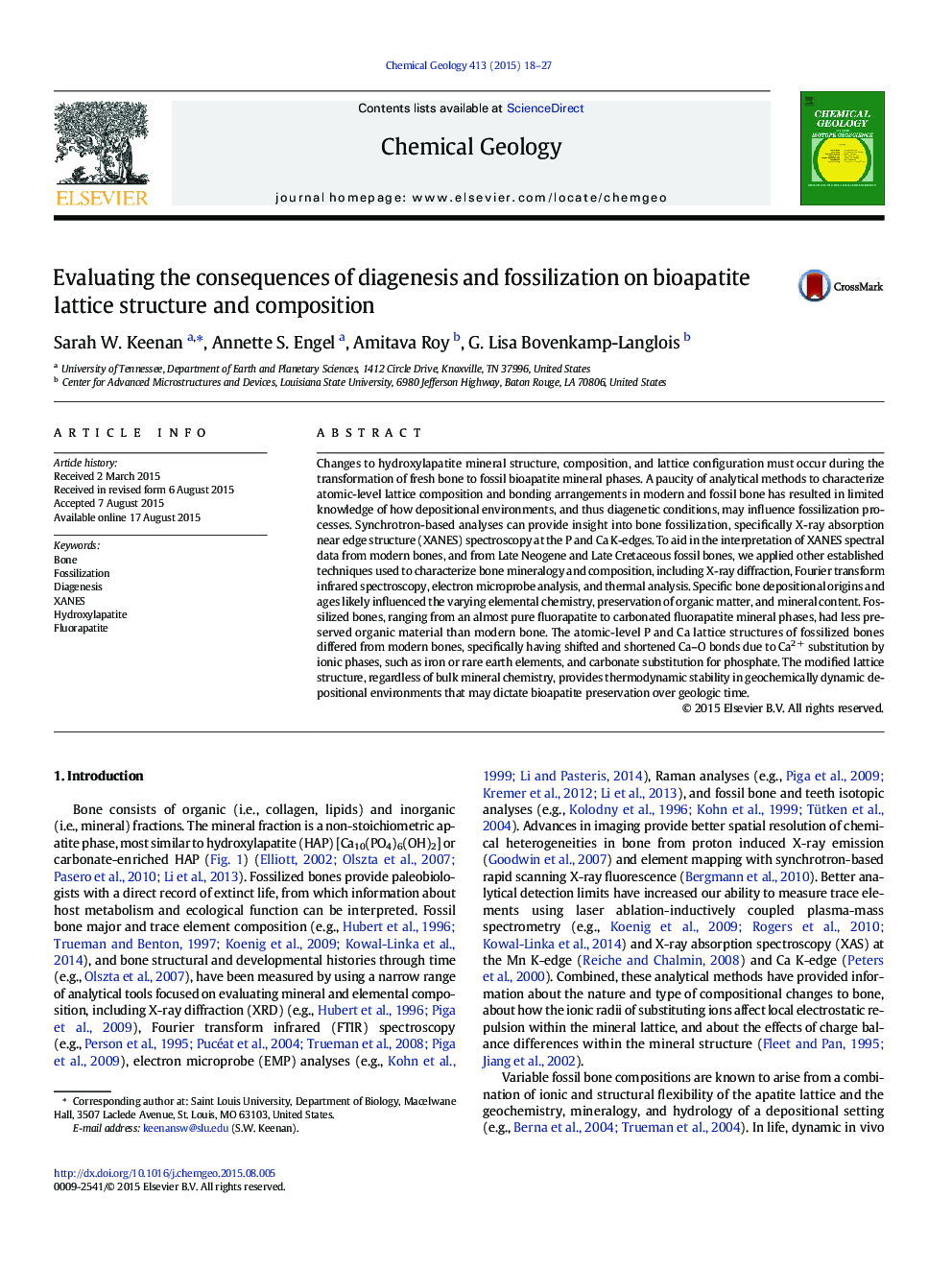| کد مقاله | کد نشریه | سال انتشار | مقاله انگلیسی | نسخه تمام متن |
|---|---|---|---|---|
| 4698463 | 1637561 | 2015 | 10 صفحه PDF | دانلود رایگان |
• Atomic-level insights into modern and fossil bone composition are presented.
• XANES spectroscopy provides novel insights into bone diagenesis.
• Bone lattice structure, rather than bone chemistry, controls fossil preservation.
Changes to hydroxylapatite mineral structure, composition, and lattice configuration must occur during the transformation of fresh bone to fossil bioapatite mineral phases. A paucity of analytical methods to characterize atomic-level lattice composition and bonding arrangements in modern and fossil bone has resulted in limited knowledge of how depositional environments, and thus diagenetic conditions, may influence fossilization processes. Synchrotron-based analyses can provide insight into bone fossilization, specifically X-ray absorption near edge structure (XANES) spectroscopy at the P and Ca K-edges. To aid in the interpretation of XANES spectral data from modern bones, and from Late Neogene and Late Cretaceous fossil bones, we applied other established techniques used to characterize bone mineralogy and composition, including X-ray diffraction, Fourier transform infrared spectroscopy, electron microprobe analysis, and thermal analysis. Specific bone depositional origins and ages likely influenced the varying elemental chemistry, preservation of organic matter, and mineral content. Fossilized bones, ranging from an almost pure fluorapatite to carbonated fluorapatite mineral phases, had less preserved organic material than modern bone. The atomic-level P and Ca lattice structures of fossilized bones differed from modern bones, specifically having shifted and shortened Ca–O bonds due to Ca2 + substitution by ionic phases, such as iron or rare earth elements, and carbonate substitution for phosphate. The modified lattice structure, regardless of bulk mineral chemistry, provides thermodynamic stability in geochemically dynamic depositional environments that may dictate bioapatite preservation over geologic time.
Journal: Chemical Geology - Volume 413, 15 October 2015, Pages 18–27
